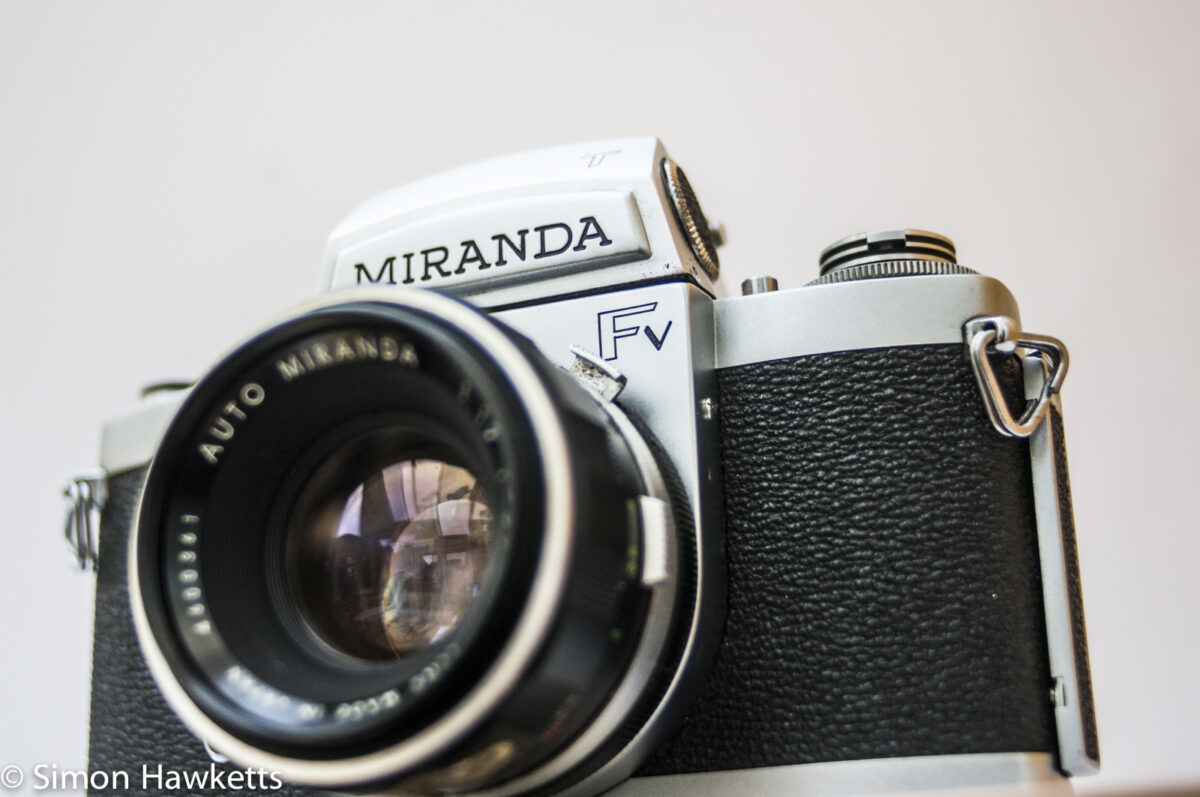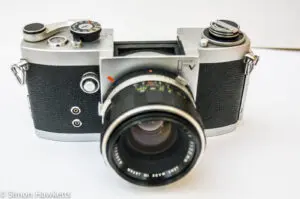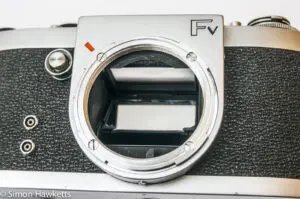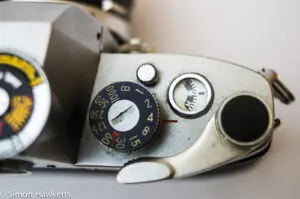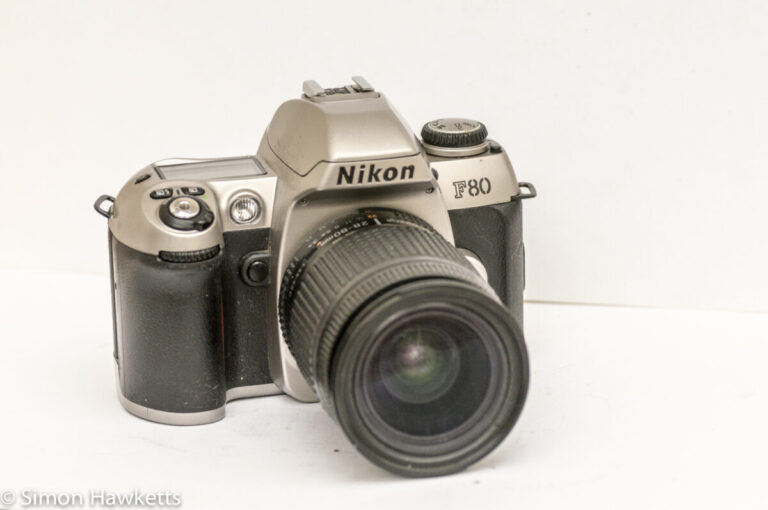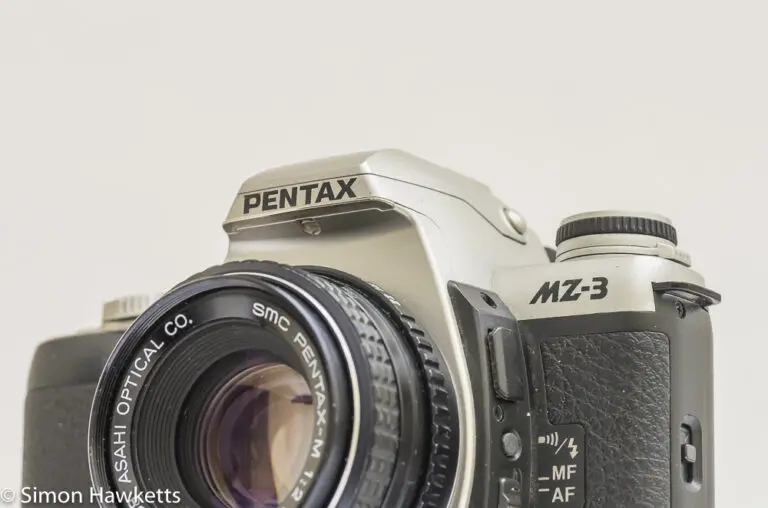Miranda Fv with TTL metering.
This is a look at the Miranda FV 35 mm SLR camera from about 1967.
I had always assumed that I knew about Miranda cameras. I remember seeing them in Dixon’s in the high street when I was a teenager. They were a slightly dodgy, rather cheap SLR sitting with rows of Chinon cameras and PrinzFlex accessories. At the time they were about on par with Chinon and Praktica, above Prinzflex and Zenith but a long way behind Pentax and Nikon, at least in my estimation.
What I didn’t know (and being a teenager, of course I knew everything), was that the Miranda camera company actually had a long and distinguished history. The cameras I saw in the mid 1970s were just badged copied of cameras made by (I believe) Cosina for Dixon’s. The real Miranda cameras are typified by the subject of this post – the Miranda Fv T.
This is a real camera, with a novel bayonet and screw thread lens mount, a removable and replaceable viewfinder and a really solid feel of precision engineering.
Minolta Fv Images
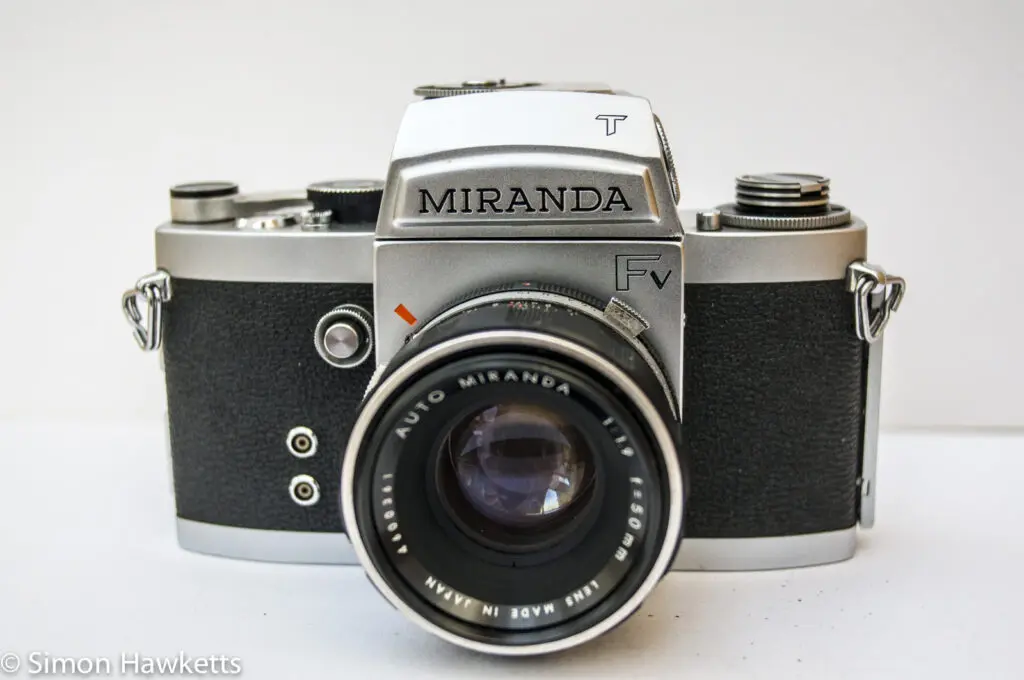
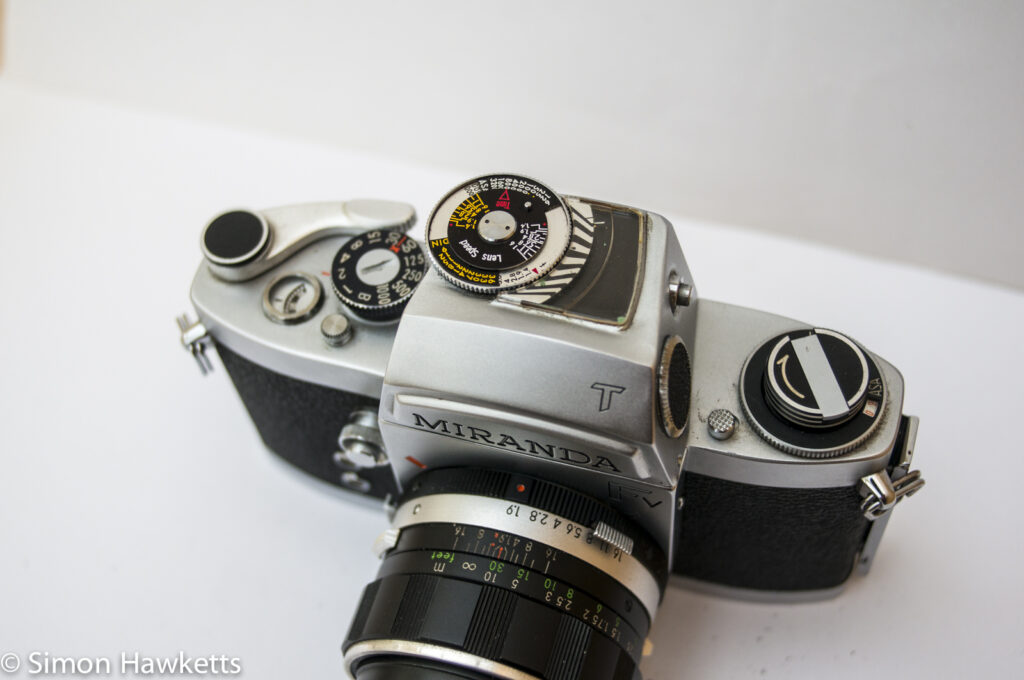
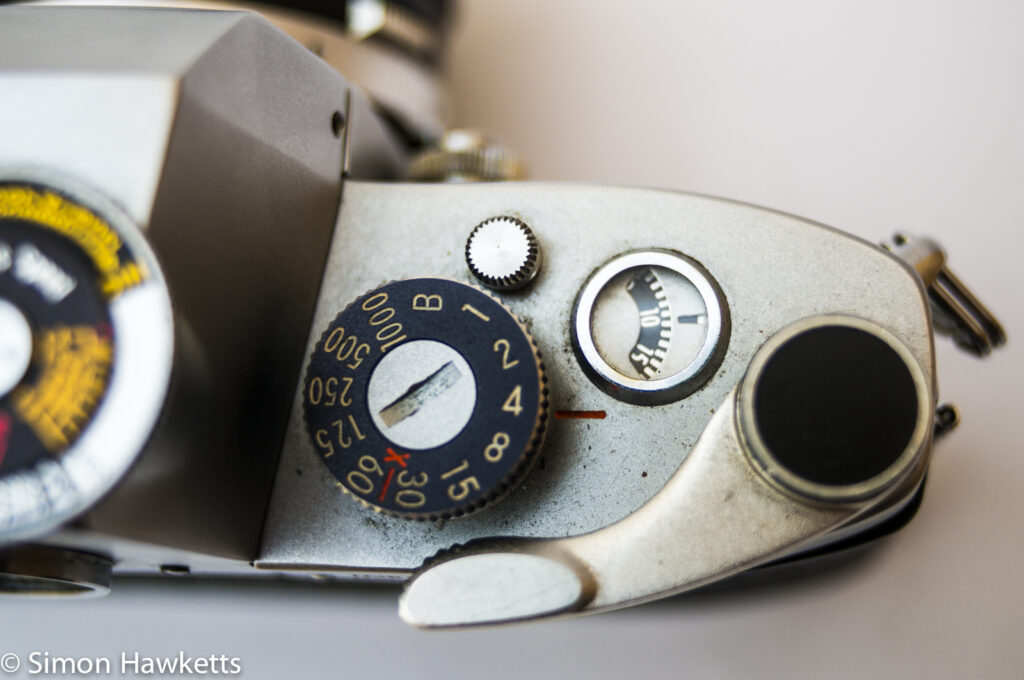
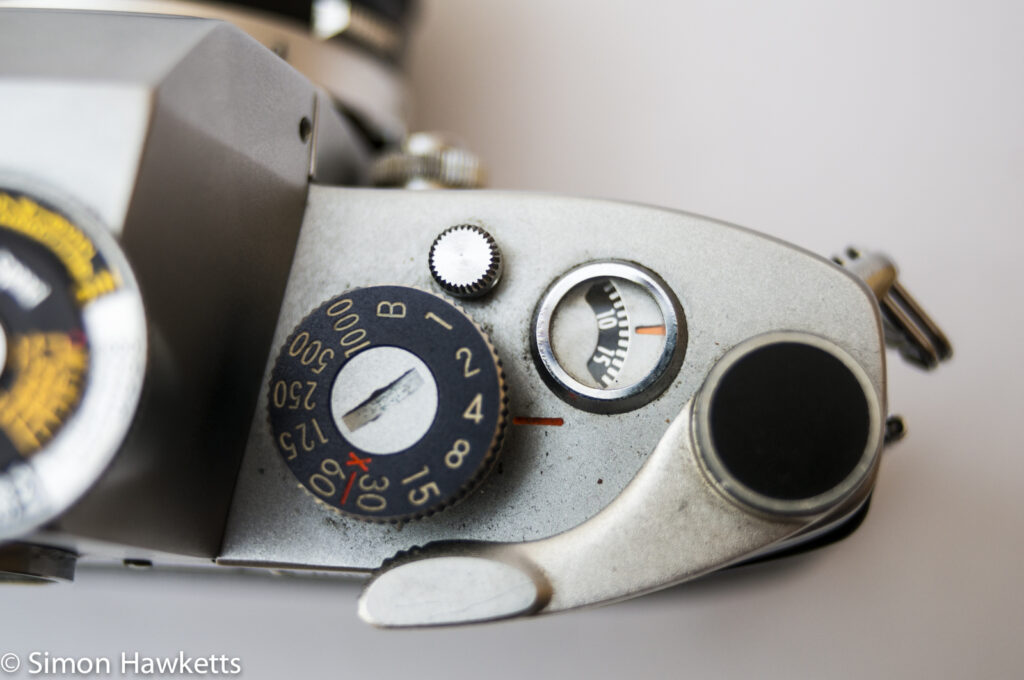
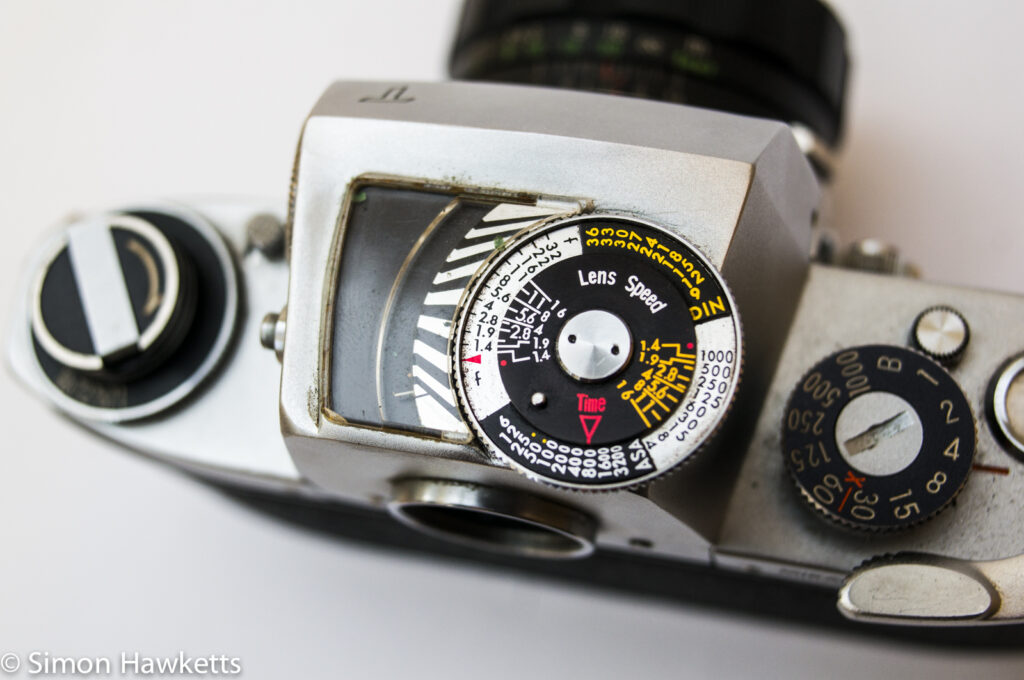
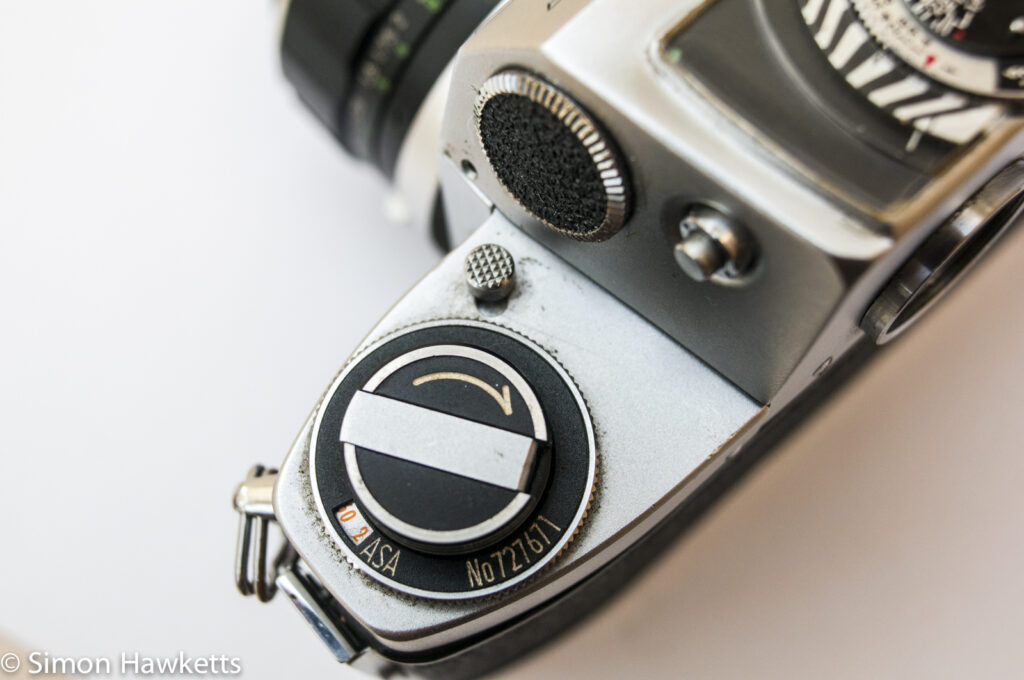
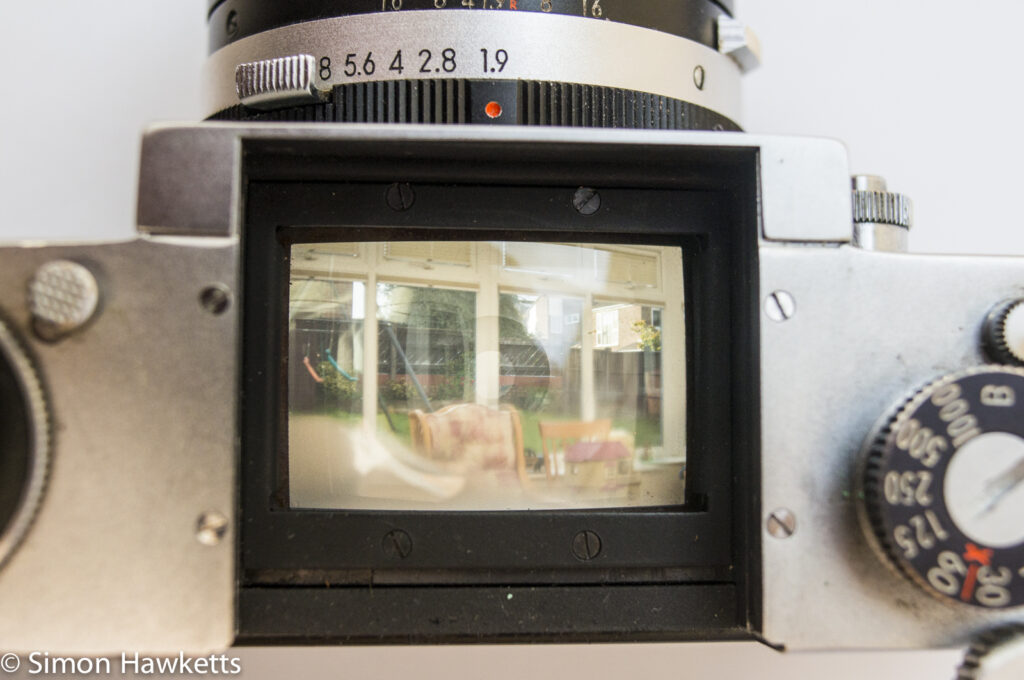
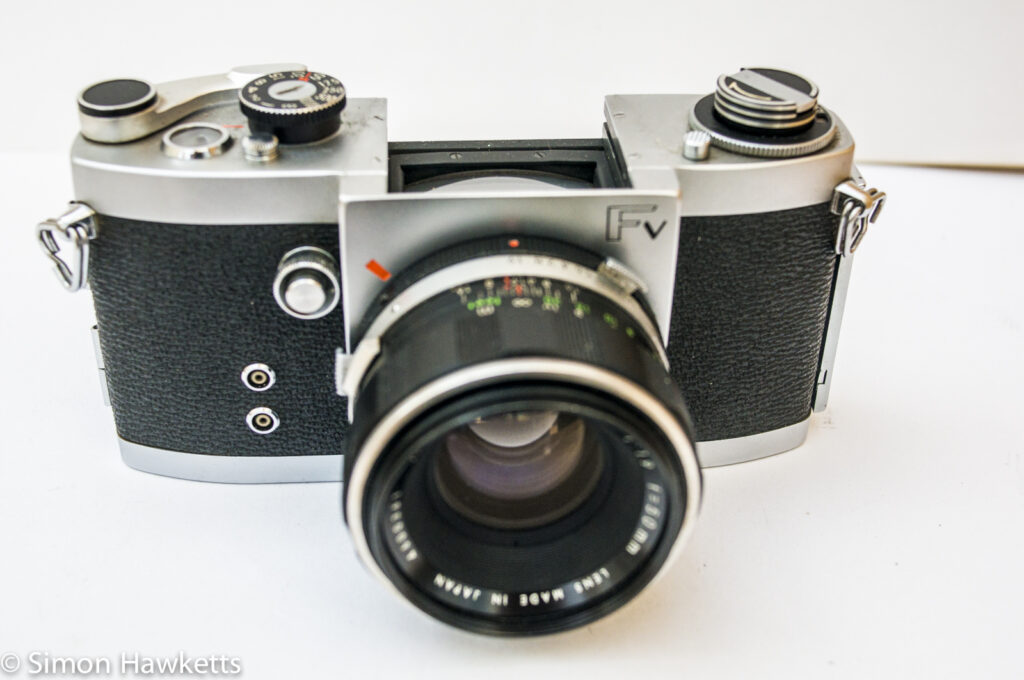
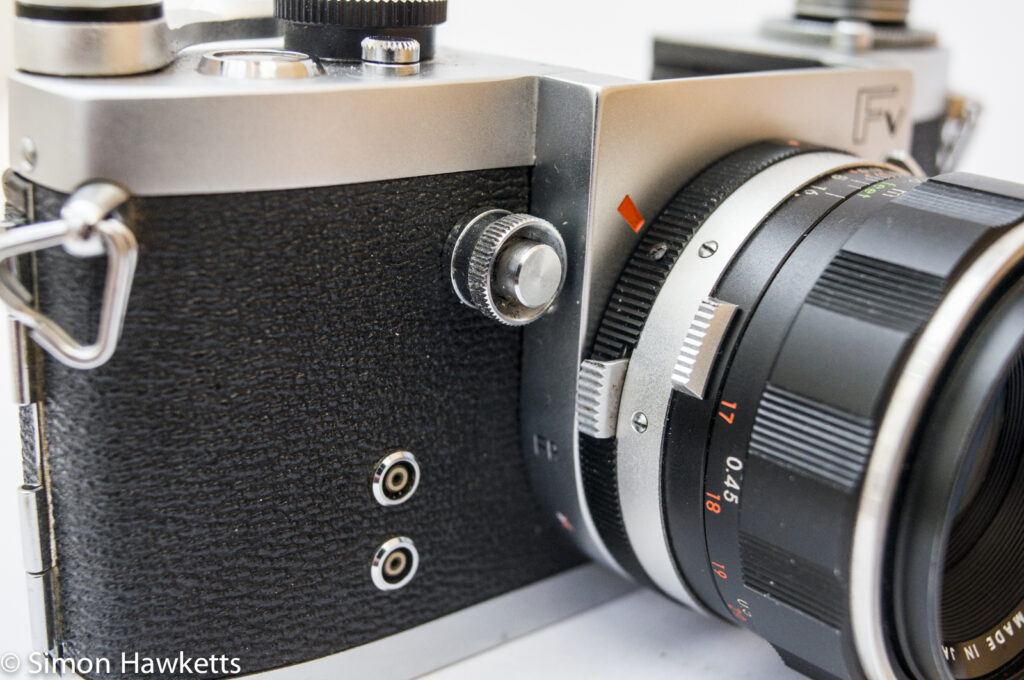
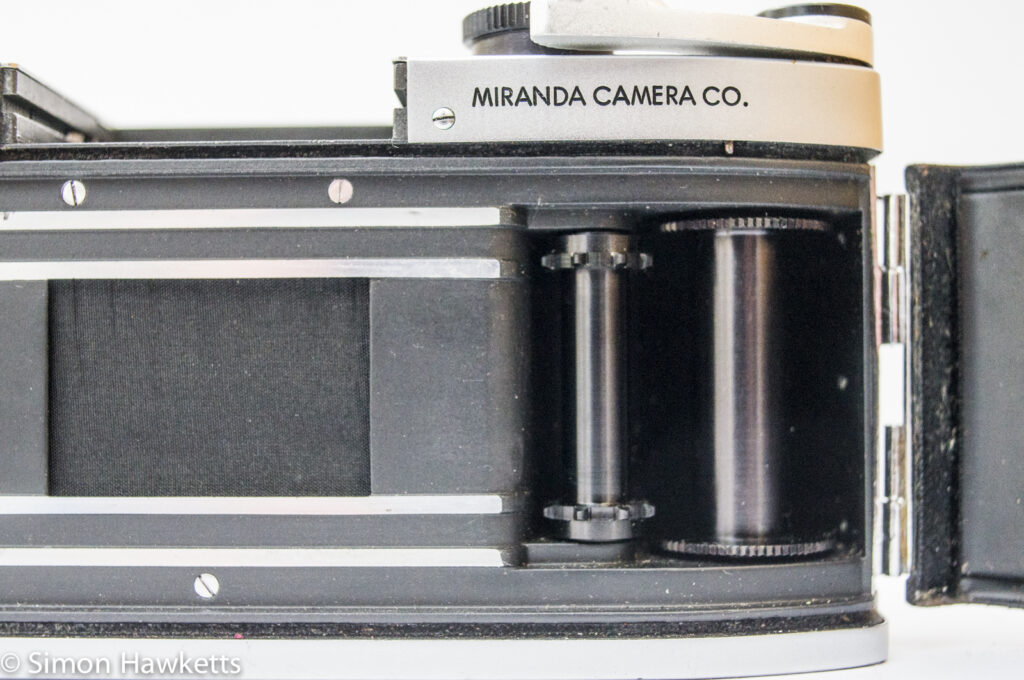
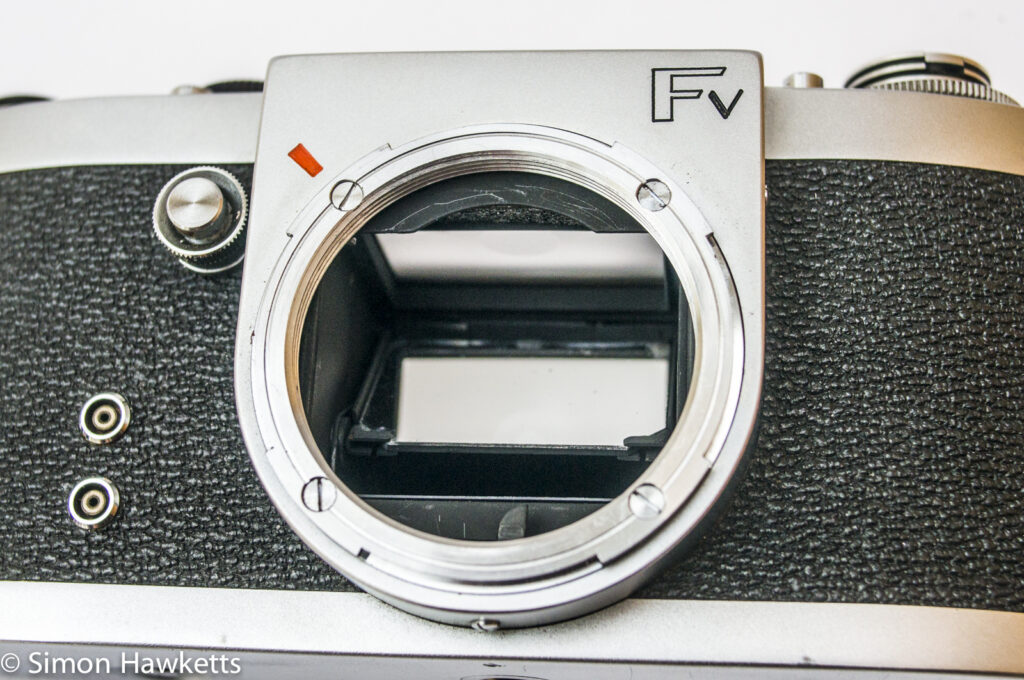
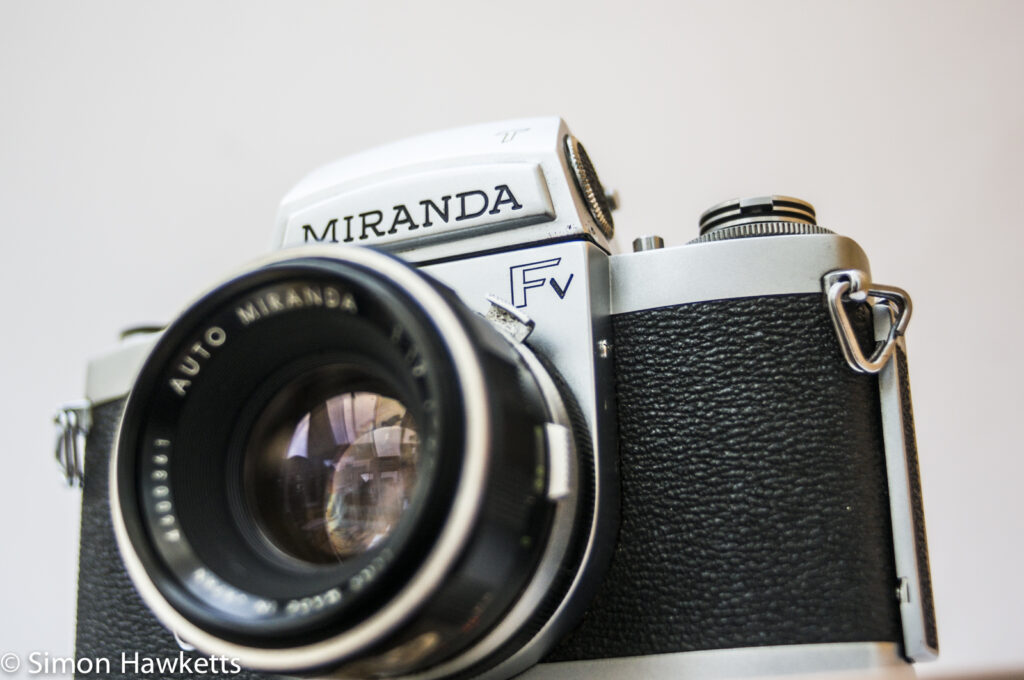
My Miranda FV camera
I bought my Miranda FV as a ‘spares or repair’ camera from eBay in a very reasonable £21 ‘buy it now’ sale because the viewfinder has some quite bad marking in. Since I knew that the viewfinder assembly was removable and replaceable, I thought there was a reasonable chance I could either open it up and clean it or replace it, so I snapped it up.
The rest of the camera was described as very good condition, with no haze or fungus in the lens and the aperture blades clean, and all shutter speeds working.
Miranda FV Description
The next few sections describe the major features of the Miranda FV
Miranda FV Viewfinder
When I received the camera, I could see that the viewfinder does indeed have some marking. The viewfinder is a type T and has a TTL light-meter built in, and the marking is below the battery compartment. I found the screw on lid to the battery compartment sealed and impossible to open, so I suspect that a battery is still inside and has leaked and etched the mirrored coating away causing the marking.
As well as this marking, the whole viewfinder has a dirty, hazy look and I suspect that the mirroring inside is probably in pretty poor condition. This isn’t really surprising considering the camera is close to 50 years old.
To release the viewfinder, there is a small lever in the top plate of the camera at the front next to the viewfinder. This is slid across, and the viewfinder assembly can be pulled towards the back of the camera, exposing the focusing screen.
There were a variety of different viewfinders available for this camera. The normal eye-level viewfinder was simpler than the T model fitted to his camera, because it didn’t have the metering fitted, but still worked in the same way, allowing the user to hold the camera to the eye. There was also a metered version which had a selenium cell fitted to the front of the viewfinder and a range of waist level viewfinders, some with pop up magnifiers to make the critical focusing easier. The model T viewfinder I have here was one of the later models.
The TTL viewfinder was quite a good mechanism for adding ‘through the lens’ light measuring capabilities to a camera which wasn’t designed with it. Because the viewfinder is replaceable, a new viewfinder was designed with a light-meter built in, which presumably users could buy to upgrade their existing camera. There is no coupling between the light-meter and the camera, it is basically the same as using an external light-meter and transferring the reading from the scale to the camera, but it had the advantage of being through the lens, so no compensation needed to be made for filters, extension tubes etc.
To use the meter, the camera is pointed at the subject and a small button on the side of the viewfinder is pressed. This causes the meter needle at the top of the housing to move and when the button is released the meter needle locks in place. The camera can then be removed from the eye and the reading can be taken by turning the dial to match the meter needle position. I haven’t yet worked out exactly how the dials are set and read – there is one part of the scale which seems to indicate the maximum aperture of the lens fitted in a similar way to the Topcon IC-1.
The viewfinder display itself is typical of cameras of this era, with a centre micro prism focusing aid.
I’ve put a bid on a replacement, non-metered, viewfinder on eBay, so I can restore that part of the camera, and I’m also keeping an eye on eBay for a waist level finder. In the meantime I’m going to try to remove the battery from the TTL viewfinder and see if I can clean it up, get it working and hopefully re-mirror the viewfinder. Anyway, here are some pictures of the viewfinder as I received it.
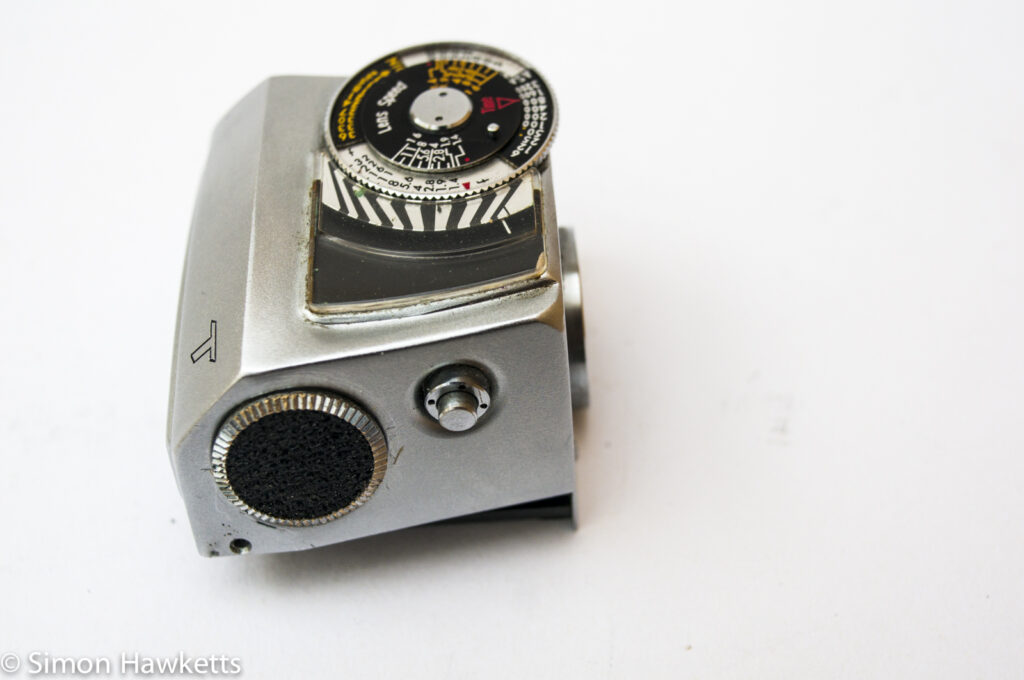
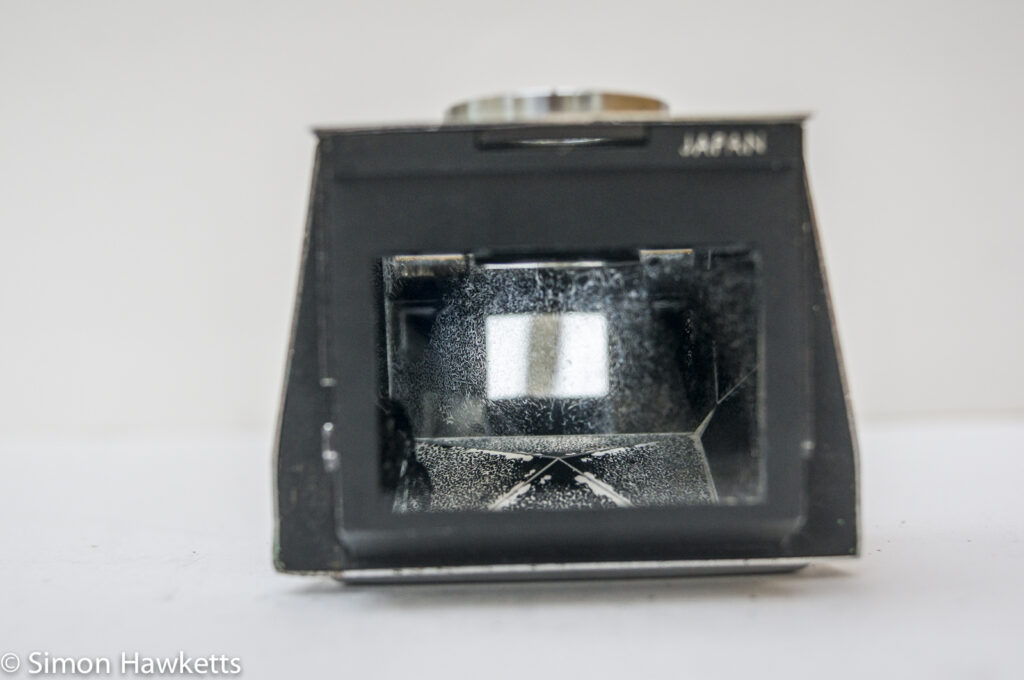
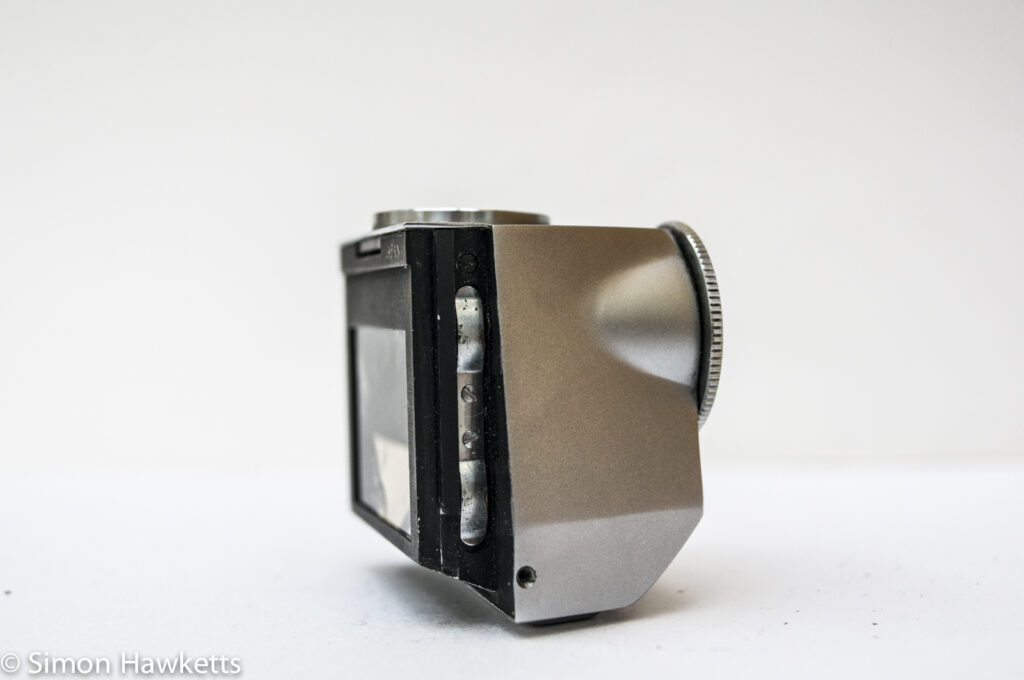
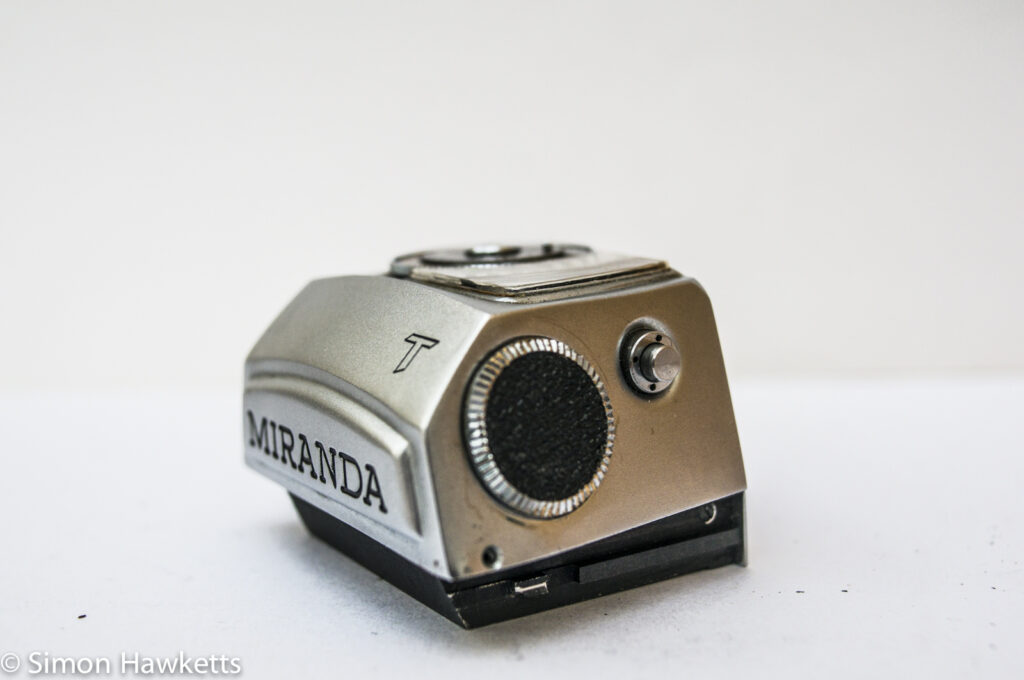
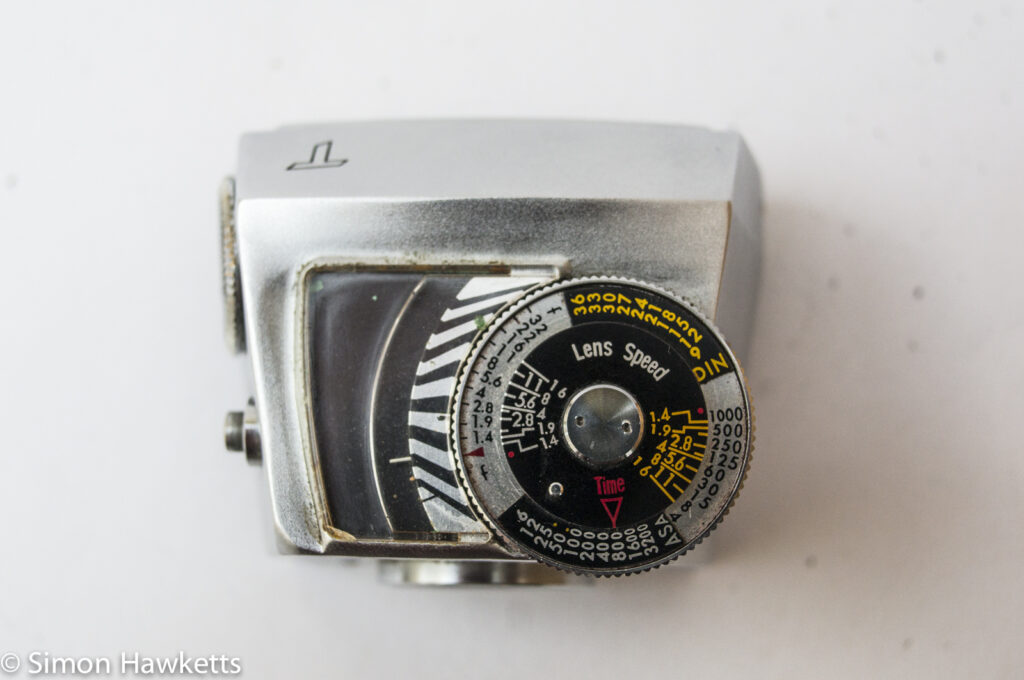
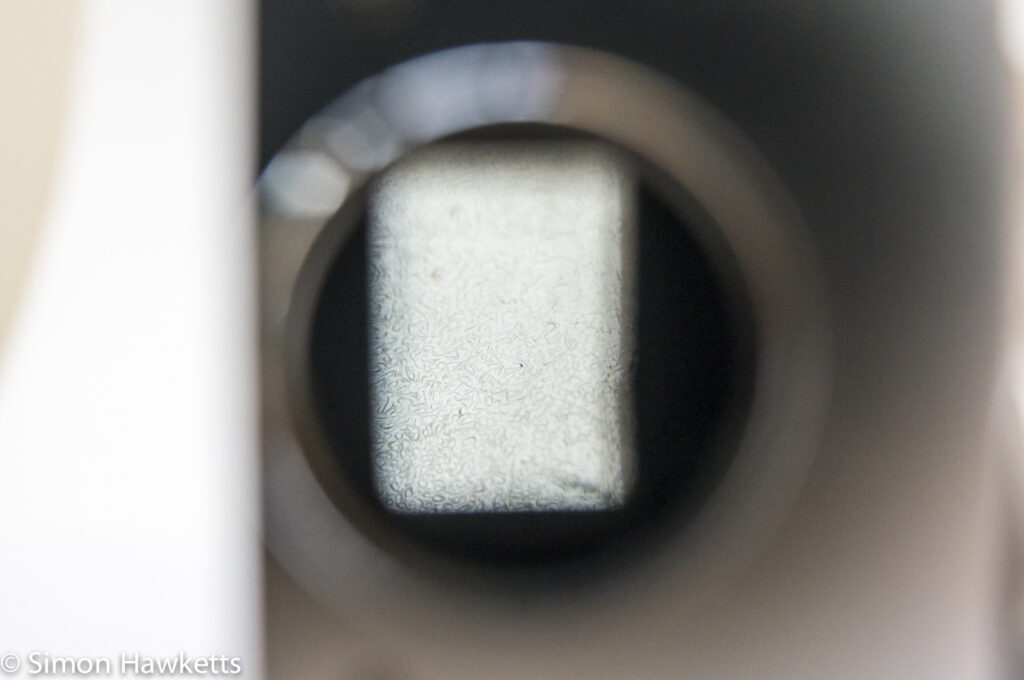
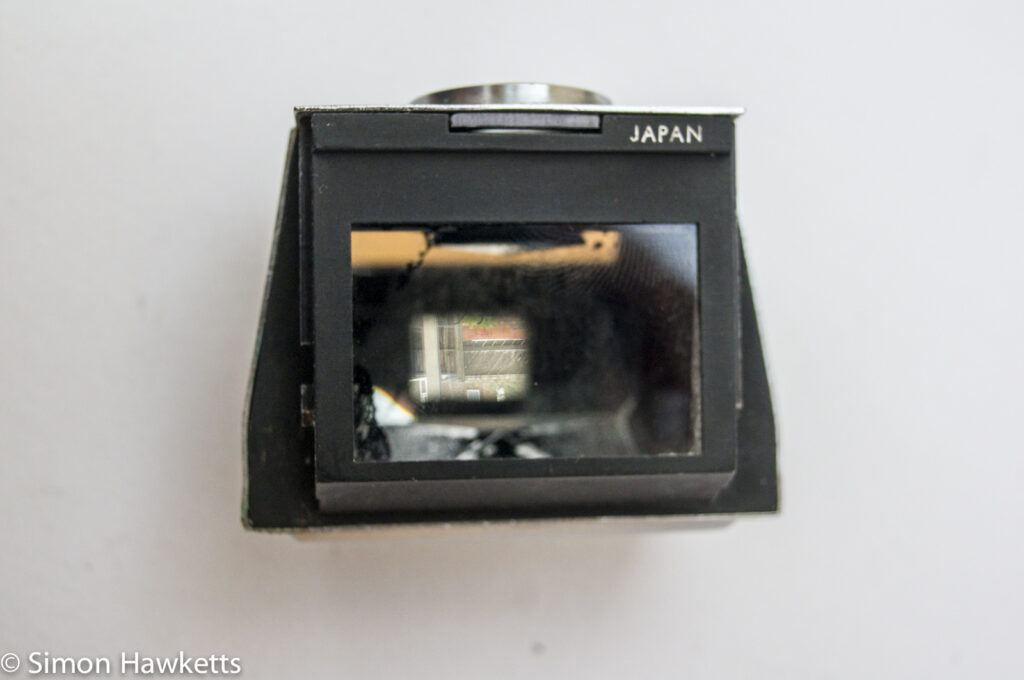
Miranda FV Lens & Mount
The lens mount on this camera is of a novel design, because the mount accepts both bayonet lenses and screw thread lenses. I assume this was done to allow users who bought this camera to continue to use lenses they had purchased for use on an older model. Unfortunately the screw thread is M44 rather than M42, so I can’t fit any of my Takumar or Pentacon lenses to the camera, but it is possible to fit them via an adapter because the camera was designed to have a smaller distance from the film plane to the back of the lens than most cameras of the day, giving enough space for the adapter to fit.
The bayonet is an external bayonet, so the lens fits over the mount and a twist clamps it in place. Some users have complained that this leads to it being too easy to accidentally remove the lens as the picture is taken. I haven’t used the camera to take pictures, but I can see that because the shutter release is on the front of the camera, when I hold the camera to take a picture my finger which would press shutter is very close to the lens release, so I would imagine it could happen.
I believe the lens has a 6 element internal construction arranged in 4 groups. Although I bought it in good condition with no contamination on the blades, I have found that there is a reluctance for the lens to stop down or open up after stopping down, so I think I’m going to take it apart to try to fix that.
It could be either oil on the blades or a spring somewhere which is a bit weak. I suspect it will be relatively easy to take apart and fix because the front name plate part of the lens unscrews and I can see a large ring which holds the front element in place with easy to get at lens spanner slots.
The lens has an aperture range of f/1.9 to f/16 and a close focus of about 17 inches (430 mm), there is a depth of field preview lever built into the lens, and it certainly appears to be coated to stop reflection. In use, it is quite a heavily damped focus ring, but again that could be a result of its age and a strip down and clean and re-lubricate could help that.
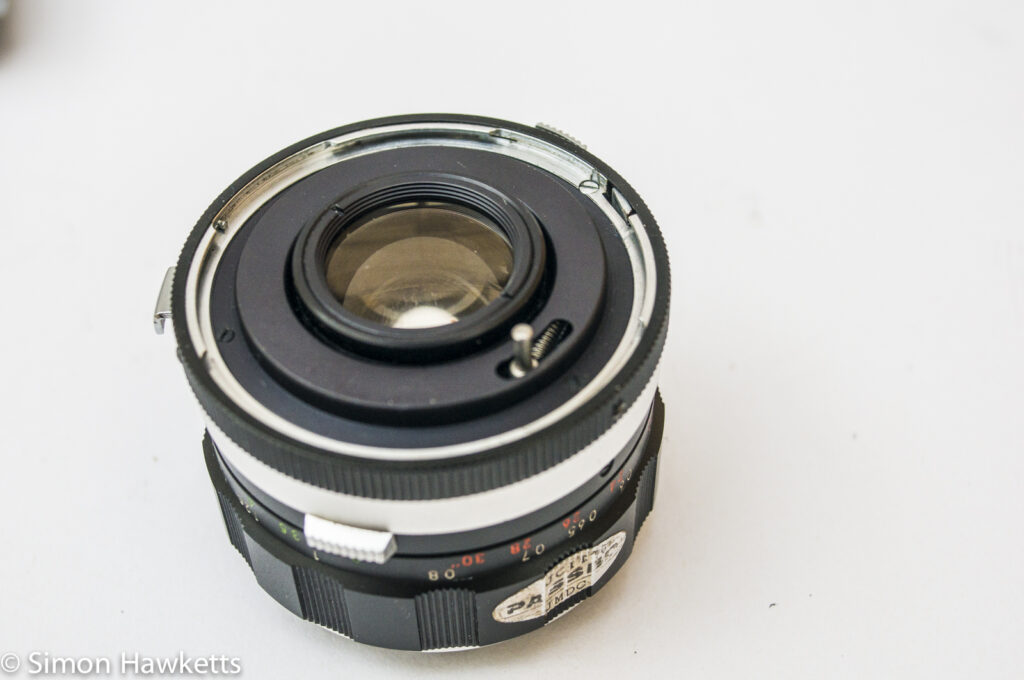
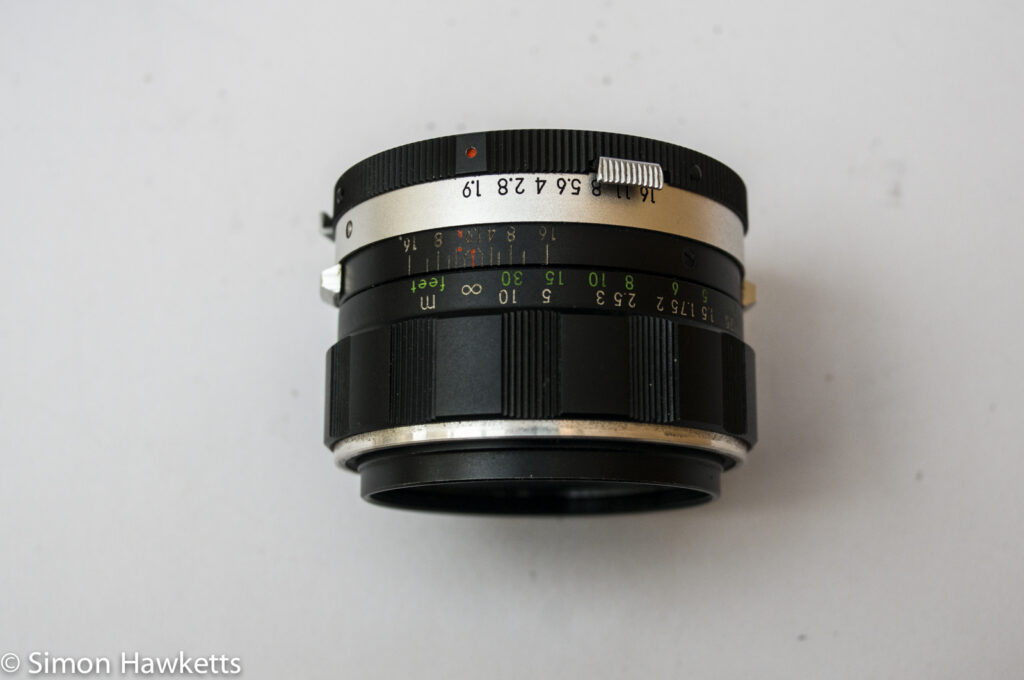
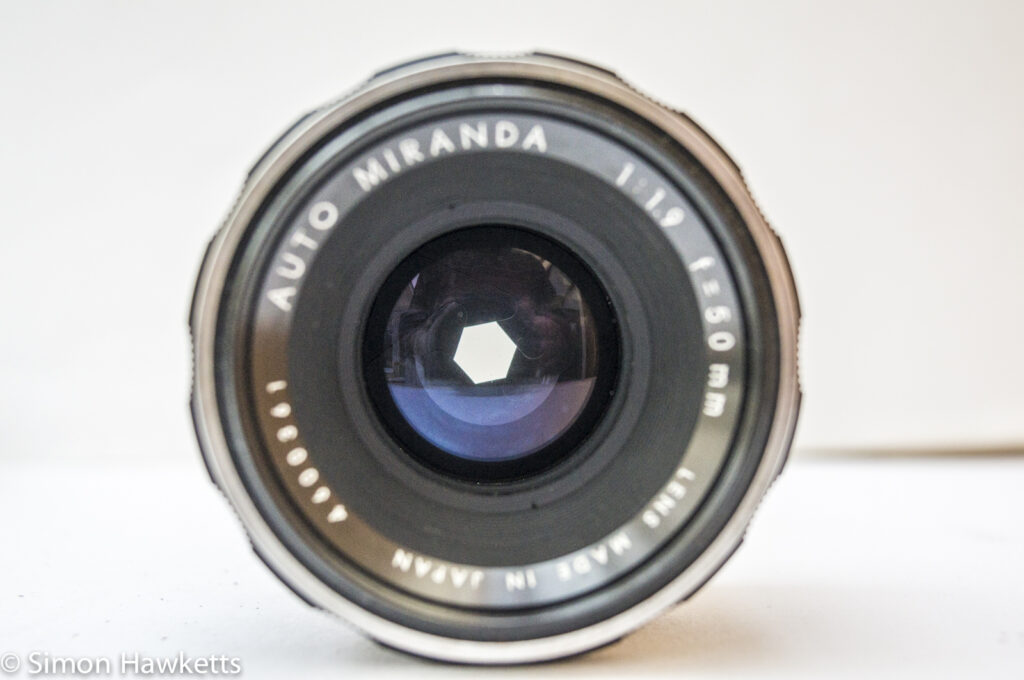
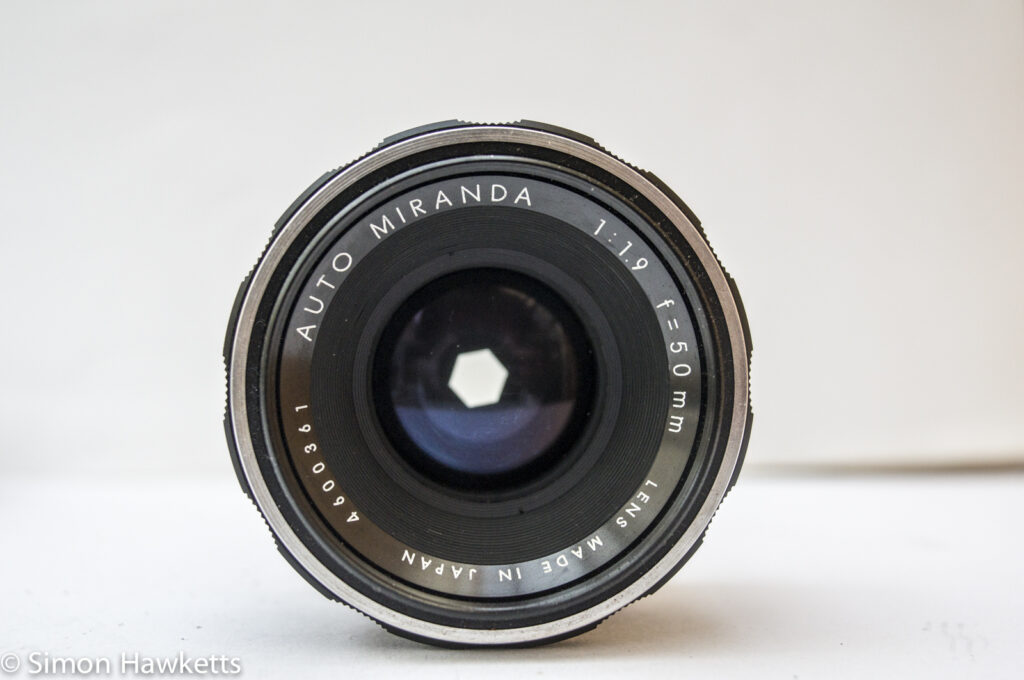
Miranda FV Camera Body.
I think the camera body design is one of the nicest I’ve seen. Instead of the normal boxy rectangular look it has a rounded design, and a heavy solid feel. When the film advance is pulled, it feels similar to my Pentax Spotmatic and Topcon Unirex – like a real piece of engineering rather than a couple of cogs winding. The film chamber door latch also closes with a nice solid click and the shutter fires cleanly and at what certainly sounding like the correct speeds.
There is some creasing of the shutter blinds, but I don’t think this would actually cause any problems with the exposures the camera would take. The tracks that the film runs on look clean and un-pitted and the sprocket teeth which advance the film are all there.
As mentioned above, the shutter release is fitted to the front of the camera, rather than the now traditional position of the top plate. In the position where the shutter release button would sit on a modern camera is a threaded socket for a cable release, with a small cover screwed in place to stop dust and dirt entering. (Reading the manual for the camera, I discovered that an accessory was also available to screw into the cable release socket, which offered a top plate release in addition to the front release).
The frame counter is itself a work of art – for a start it’s a really nice design with a chrome circle and an arc of numbers with a central marker indicating the frame number. The really smart feature however is that as the film advance lever is pulled, the little marker changes to orange to show the camera is ready to take a picture.
The shutter speed dial on the top plate has another feature I’ve not seen on any of the other cameras I own. The flash sync setting has its own red marker between the 1/30 and the 1/60 setting, which syncs the flash at about 1/45. The body has sockets for FP and X type flash but no accessory socket, although some viewfinders did have an accessory socket fitted in the traditional place.
I think it might be necessary to remove and clean the focusing screen, which sits just below the viewfinder. There seem to be some marks on it and it seems quite dull. If I do that, I will probably make it the subject of another post.
So, my teenage ideas about Miranda cameras have been well and truly put to sleep – it turns out they made fantastic quality cameras and I suddenly have a whole new range to collect.
Update – I have recently put a film through this camera as part of an experiment with developing film in coffee. Although this wasn’t entirely successful, there are a few sample pictures in this post.
Miranda FV Camera Manual
As well as the linked manual in the list below, I’ve now scanned the copy of the manual I have and included it in the article as well.
Miranda FV Camera Specs
- Miranda Fv T 35mm SLR
- Year of manufacture c 1967
- Removable/Replaceable viewfinder with lots of viewfinder options
- TTL metering in the viewfinder
- Centre circle microprism focusing aid
- Bayonet and screw thread lens mount
- Front mount release + optional top plate release
- Cable release socket + dust cap
- Beautifully engineered
- 1 – 1/1000 sec + B Focal Plane shutter
- FP & X flash sync
- Centre mounted tripod bush
- 50mm f/1.9 Auto Miranda lens
- Depth of field preview button on lens
- Ser No: 727671
- Lens Ser No: 4600361
- Manual available on-line here
Discover more from Everything Vintage
Subscribe to get the latest posts sent to your email.

